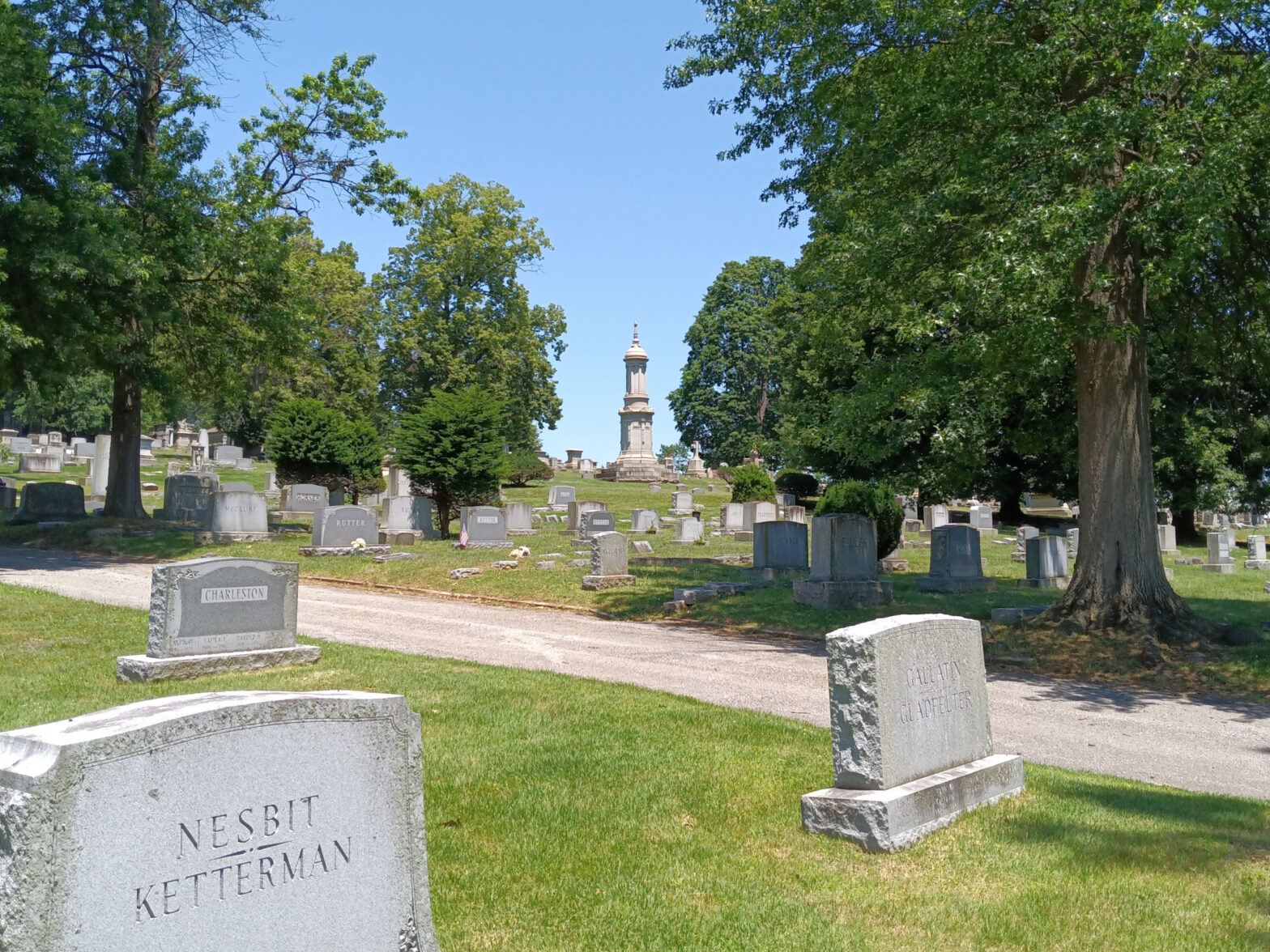For as long as I’ve lived in York, I’ve wanted to visit Prospect Hill Cemetery. A little north of downtown and Peoples Bank Park, the home of the York Revolution, I’ve driven past it at least fifty times over the years. Every time, I take a quick glance and I can tell instantly that there’s history there. But I hate going into downtown York, so it’s only ever been an idea, even though I knew of at least one thing I’d want to look for.
Then on Saturday, I was in downtown York for the #PerryIsNoPatriot rally, demanding the resignation of Representative Scott Perry for his actions in supporting the January 6th insurrection. Whenever I can park on the top deck of a parking garage, I do, and before I went to the rally I took photos from the city from that high vantage point.
You can see Prospect Hill easily from the top of the parking garage.
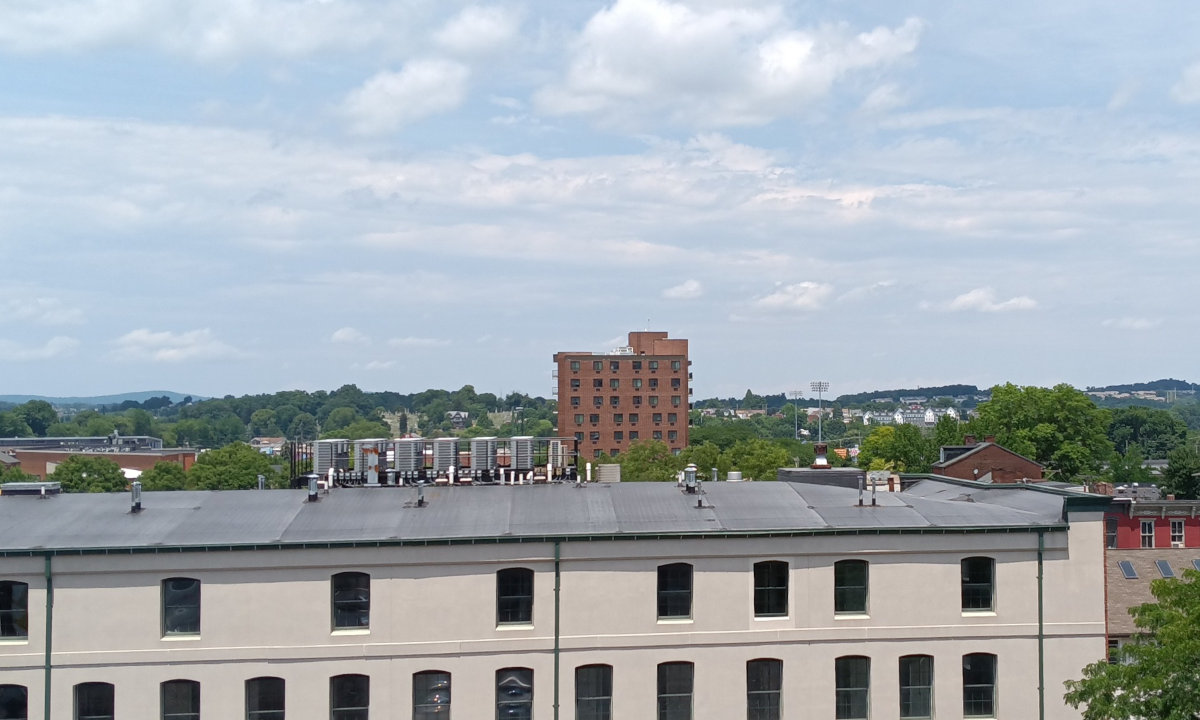
“That’s what I’ll do!” I thought. “After the rally, I’ll go to Prospect Hill and poke around!”
Oh, you sweet, silly person, you. Remember how I said I hate going into downtown York? I got honked out for not running a red light, I got lost, I got terribly frustrated, and I went home.
It’s just as well. I really needed to plan before I went.
Before we come to that, here are a few photos of the #PerryIsNoPatriot rally. Uncharacteristically, I did not take many photos of the rally, and none after the first speaker — there were six or seven — which is unfortunate. One of the speakers did her speech almost entirely in Spanish. She was incredibly impassioned, I had not an idea of what she was saying (nor did about two-thirds of the audience), but I nodded and clapped a lot because she was not getting much in the way of feedback from the audience.
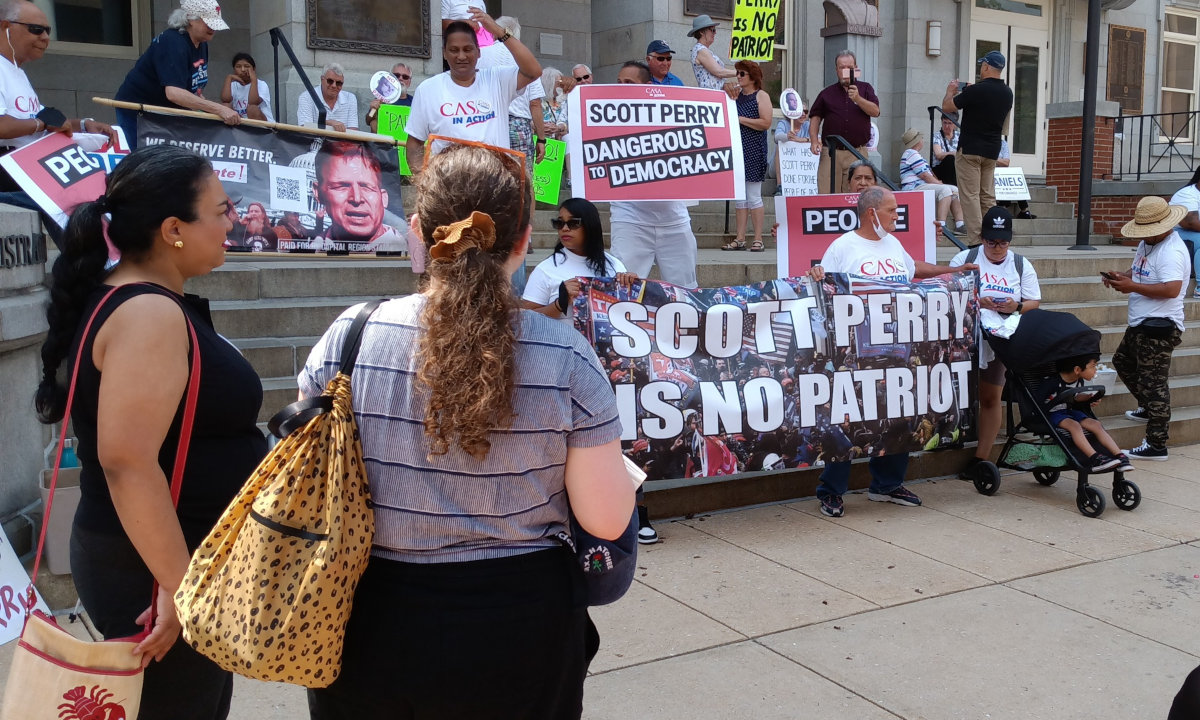
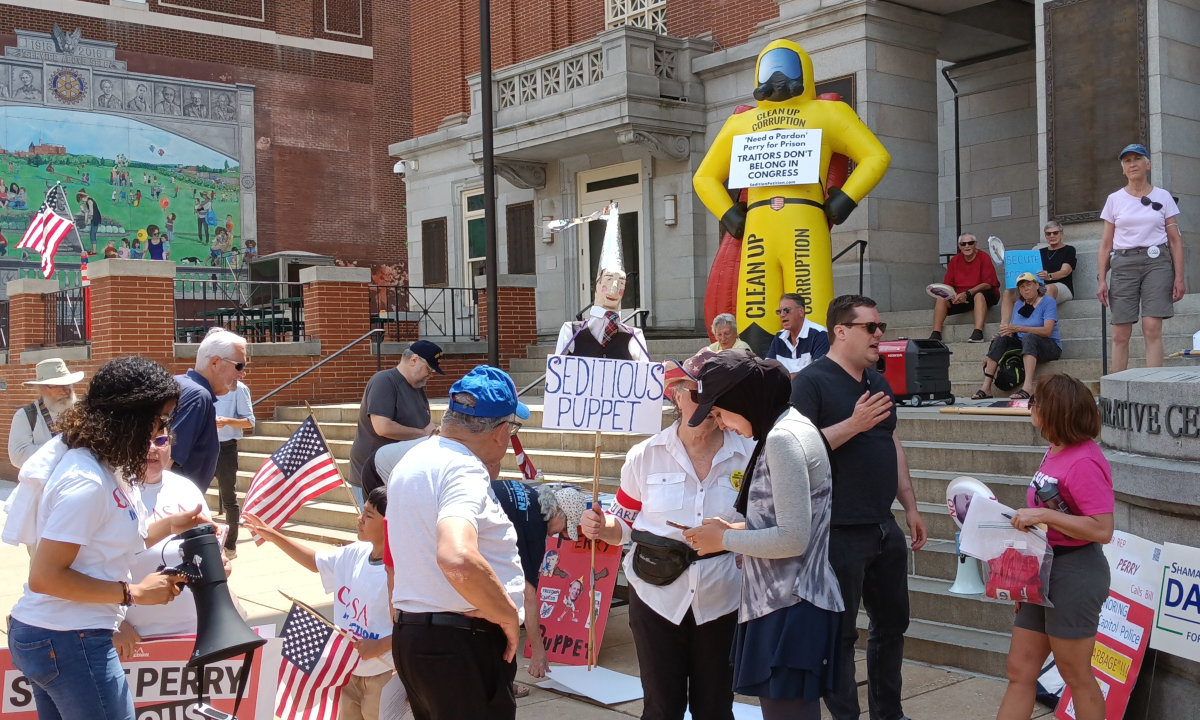
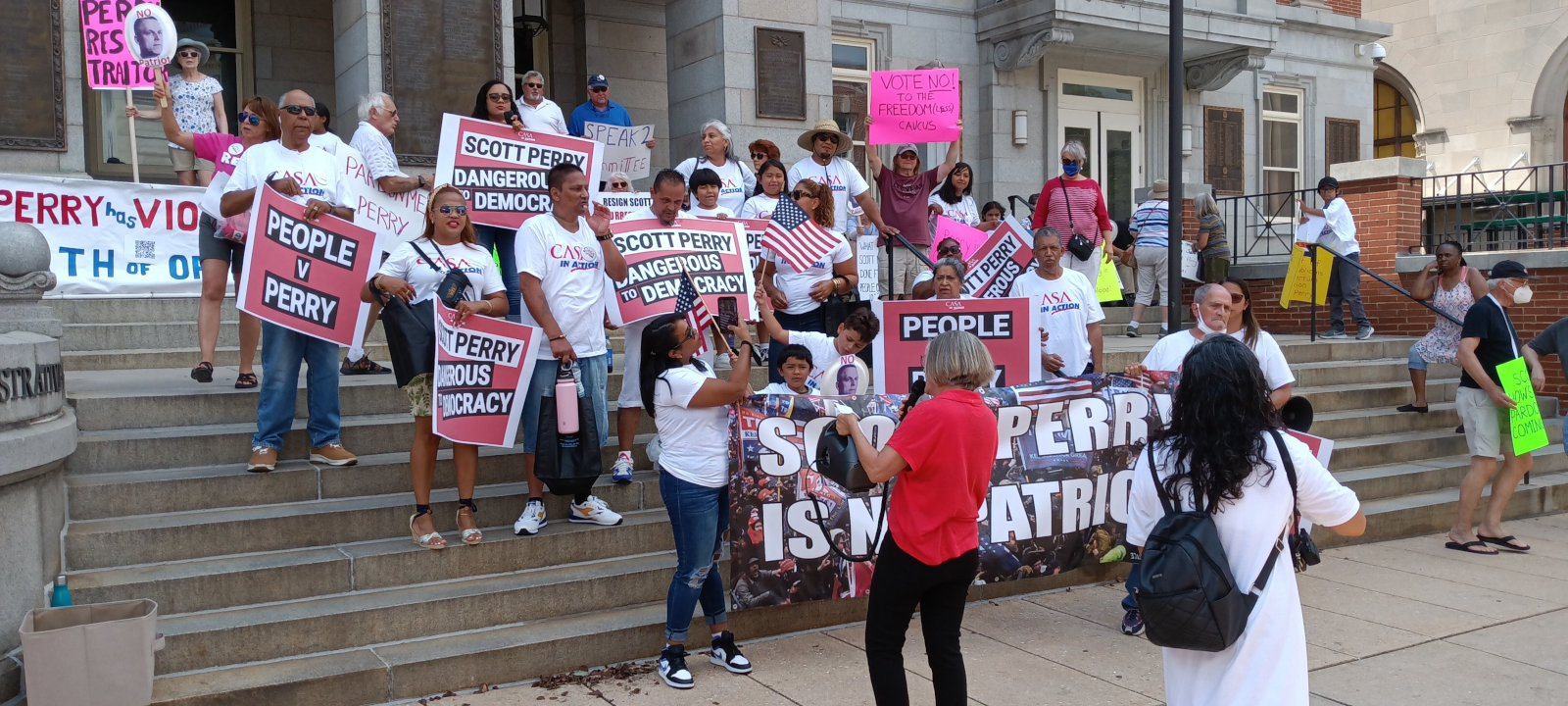
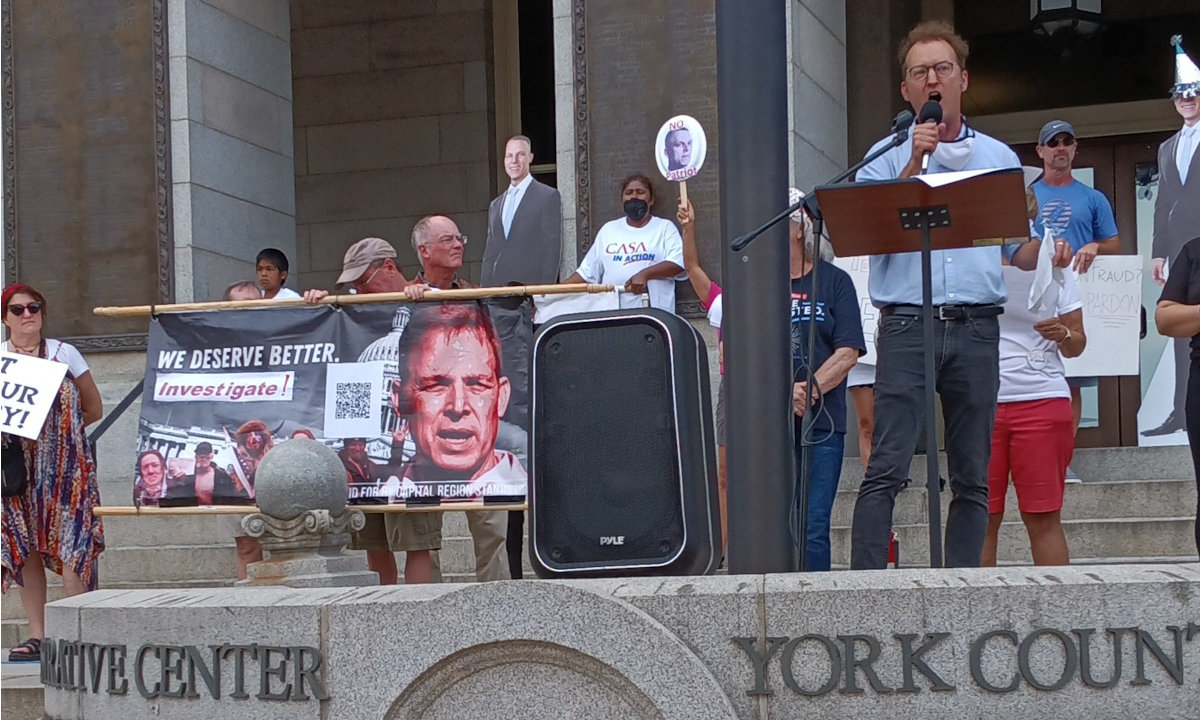
Sunday morning I did a little planning. I downloaded a map of Prospect Hill Cemetery. I studied maps to figure out the best way to go — and what would minimize my stress. And I looked up what I wanted to find — the grave of “Lefty” George.
George was a baseball player of the early 20th-century, a pitcher who had a short major league career — the Browns (today, the Orioles) in 1911, the Naps (today, the Guardians) in 1912, the Reds in 1915, and the Braves in 1918. I had never heard of him until I read a history of York County baseball that was published in the local newspaper here in 2019, which sent me to a series of articles on which that work was based from 1940. George was a bit like Jack Keefe from Ring Lardner’s baseball fiction; he had good “stuff,” but he couldn’t (or wouldn’t) be coached and he bickered with management over money, so he never caught on anywhere, hence his short career at that major league level. But George had a very long minor league and semi-pro career, lasting into World War II when he was in his mid 50s. SABR has a long and interesting biography of George that’s worth reading.
The best way to get to the cemetery, I determined, was to avoid downtown altogether. I could go up to Route 30, then take a left onto Pennsylvania Avenue, and then the back entrance to the cemetery would be right there. George, I learned, was buried in section 17, which was closest to the rear entrance and most accessible from there anyway, so this would work out even better.
Then I wanted to talk back toward the main entrance on George Street and look back toward downtown York, essentially to recreate the shot from the top of the parking garage but in reverse. I didn’t know how large Prospect Hill Cemetery was, having only driven past it, but it seemed large but not too large.
Getting there wasn’t bad, though there was an accident on Mt. Zion Road that snarled traffic even before I hit Route 30. And traffic on Route 30 going across York can be gross.
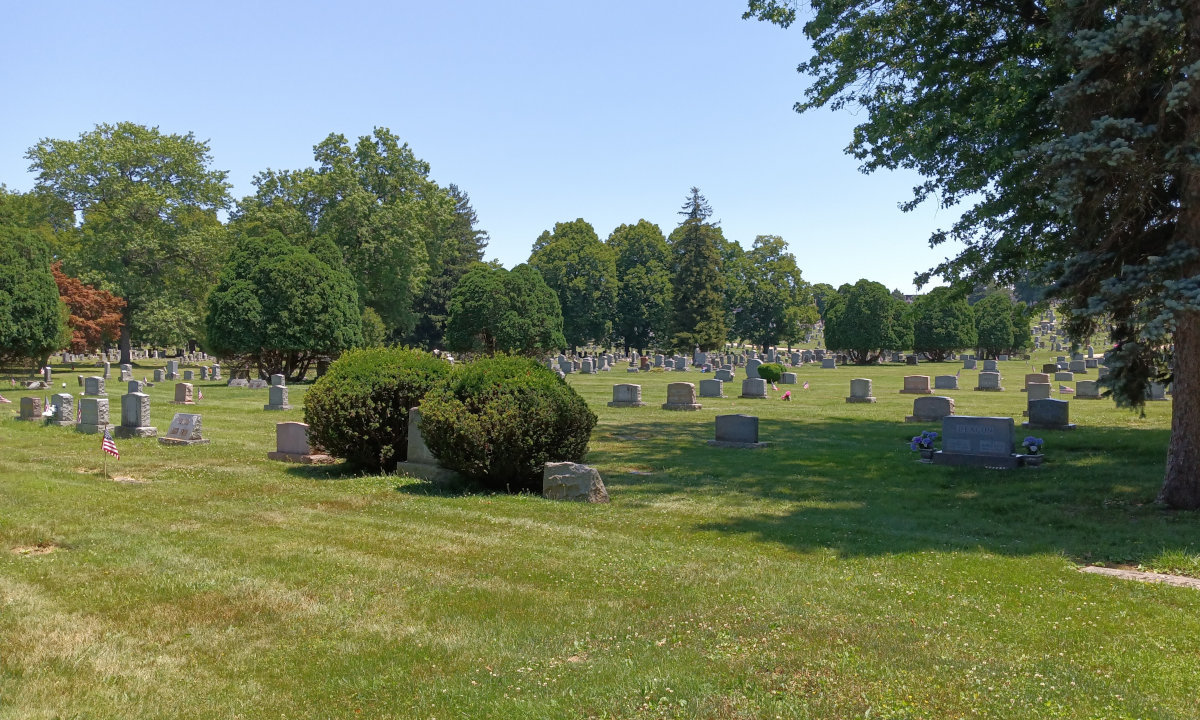
Finding “Lefty” George took less than five minutes. I had parked less than 100 feet from him. I hadn’t planned to do that, and when I took a picture looking in the direction of his section, I actually have him before I even knew where he was.
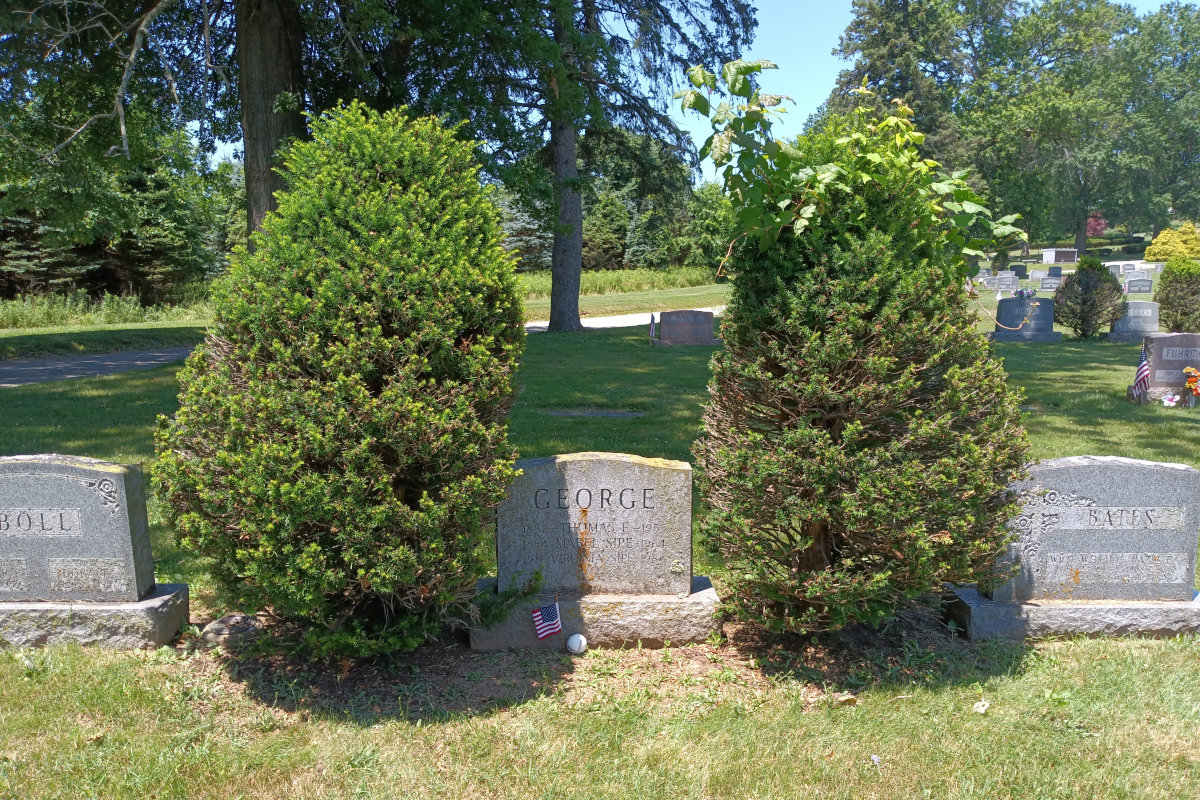
I took a baseball and an American flag. I don’t know if George served in World War I — he’d have been in his mid-thirties even then — but his sons served in World War II. And the old southpaw deserved a baseball.
While I wanted to get to the main entrance, I could see there was a lot to see just where I was, so I identified a number of interesting looking things with the intention of eventually working my back back toward the main entrance.
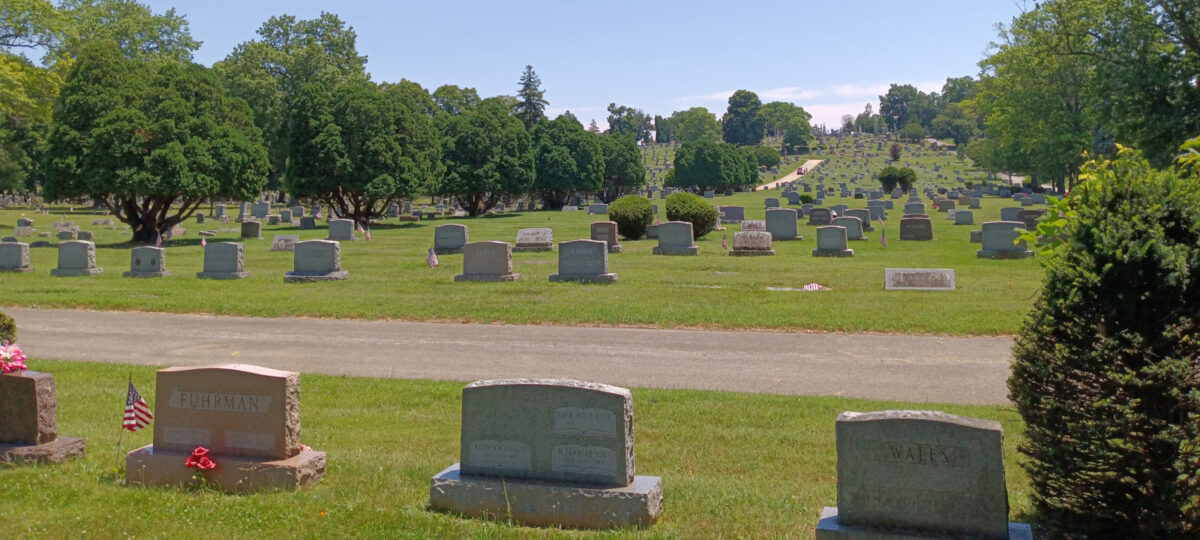
As you can see from the photos, many graves were decorated with American flags for the Fourth of July. What isn’t as apparent, though it was as I walked through the cemetery, is that there were almost as many flags laying on the ground.
Partly, I think it was because they had been used and reused; I tried to set a number — at least a dozen — upright, but the sticks were often broken or mangled and the ground was hard as concrete. Some I could get back into the ground. Some I could not. I recall there was one where I broke the end of the stick off to be able to drive it into the ground. I did my best.
I saw a number of Albert Gallatins in the cemetery; none were any relation to the Early Republic politician and Founding Father, as best I can tell. And while I saw a number of Heilmans, I don’t believe any were related to the former president of the University of Richmond.
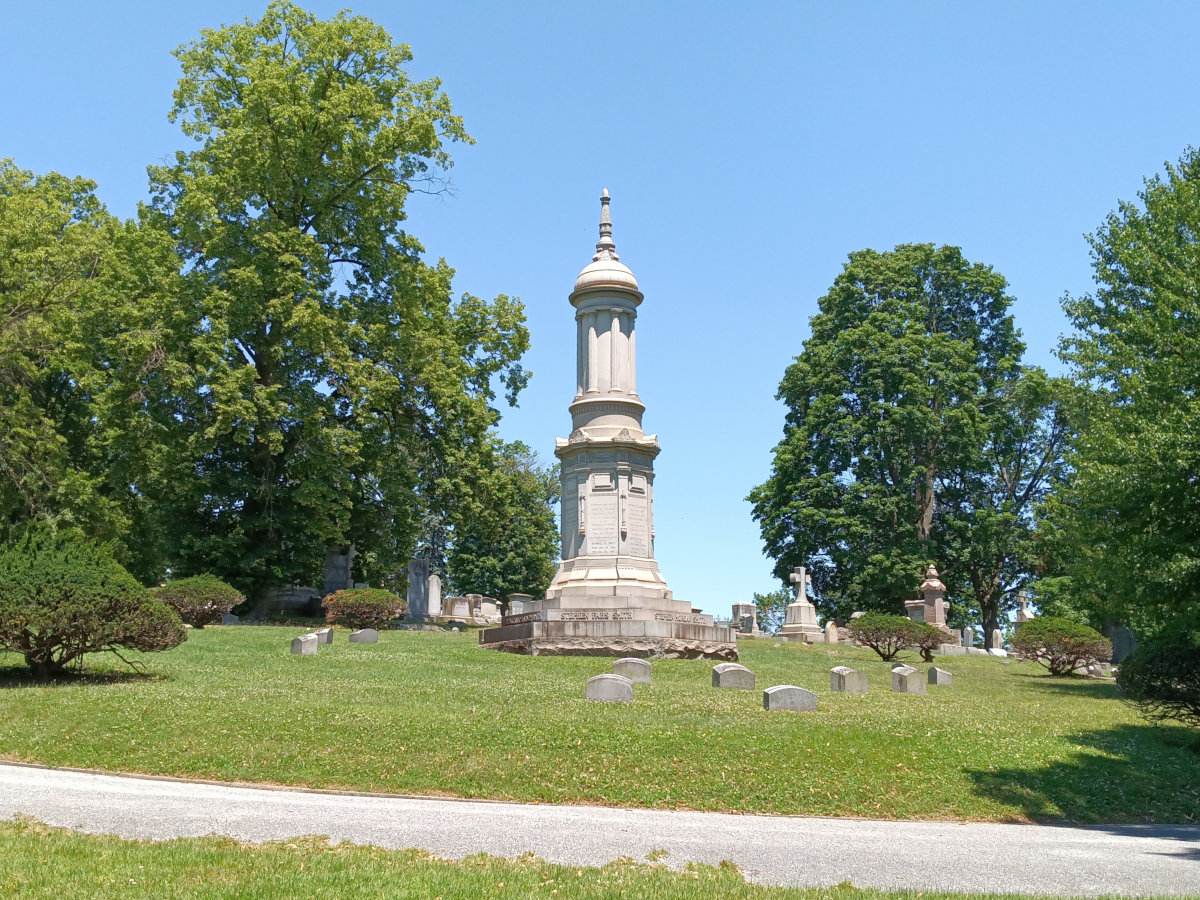
This monument caught my attention from a distance. On the Prospect Hill Map this is marked as “Smith Circle,” and a circle it is!
Reverend Steven Morgan Smith, a minister from North Carolina, came to York to serve the Moravian Church downtown, then served in the Union Army during the Civil War. After the war, he invented a washing machine and become one of York’s leading industrialists. He’s buried here, along with his wife and children.
As an aside, I didn’t realize the Moravian Church arose from the Bohemian Reformation of Jan Hus, which predates Martin Luther by a century.
Uphill of this were several mausoleums, and then I saw something quite interesting.
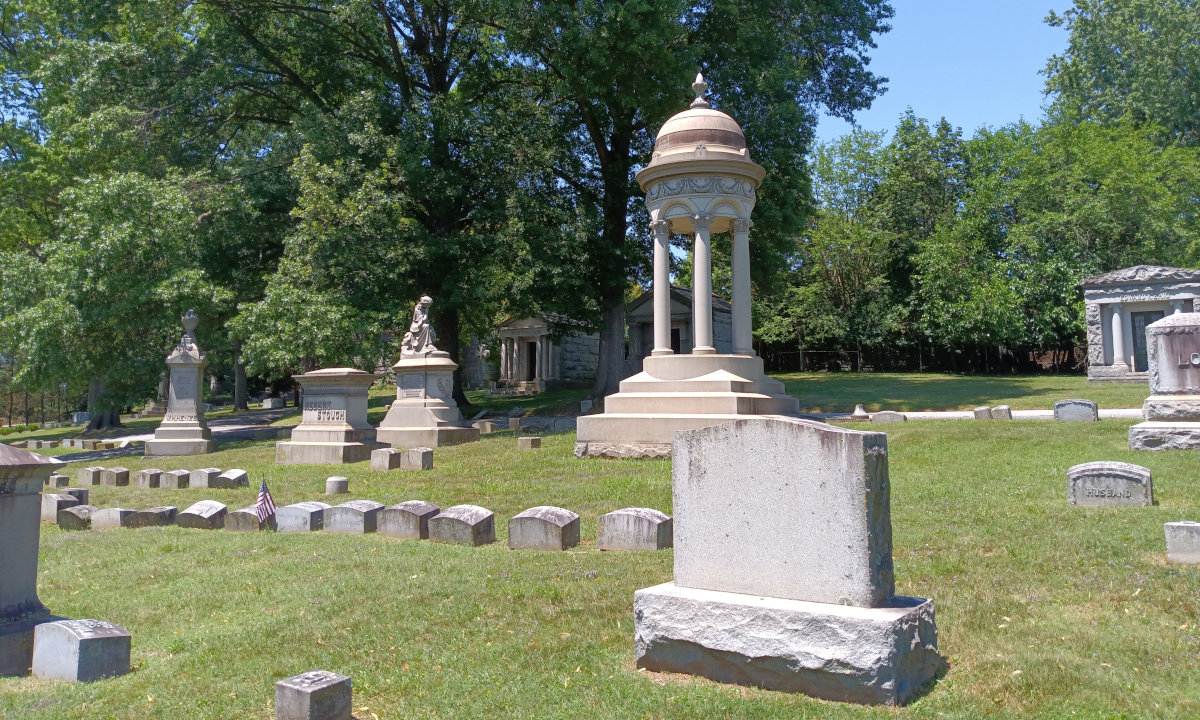
I had to take a closer look. This seemed quite unusual and unique.
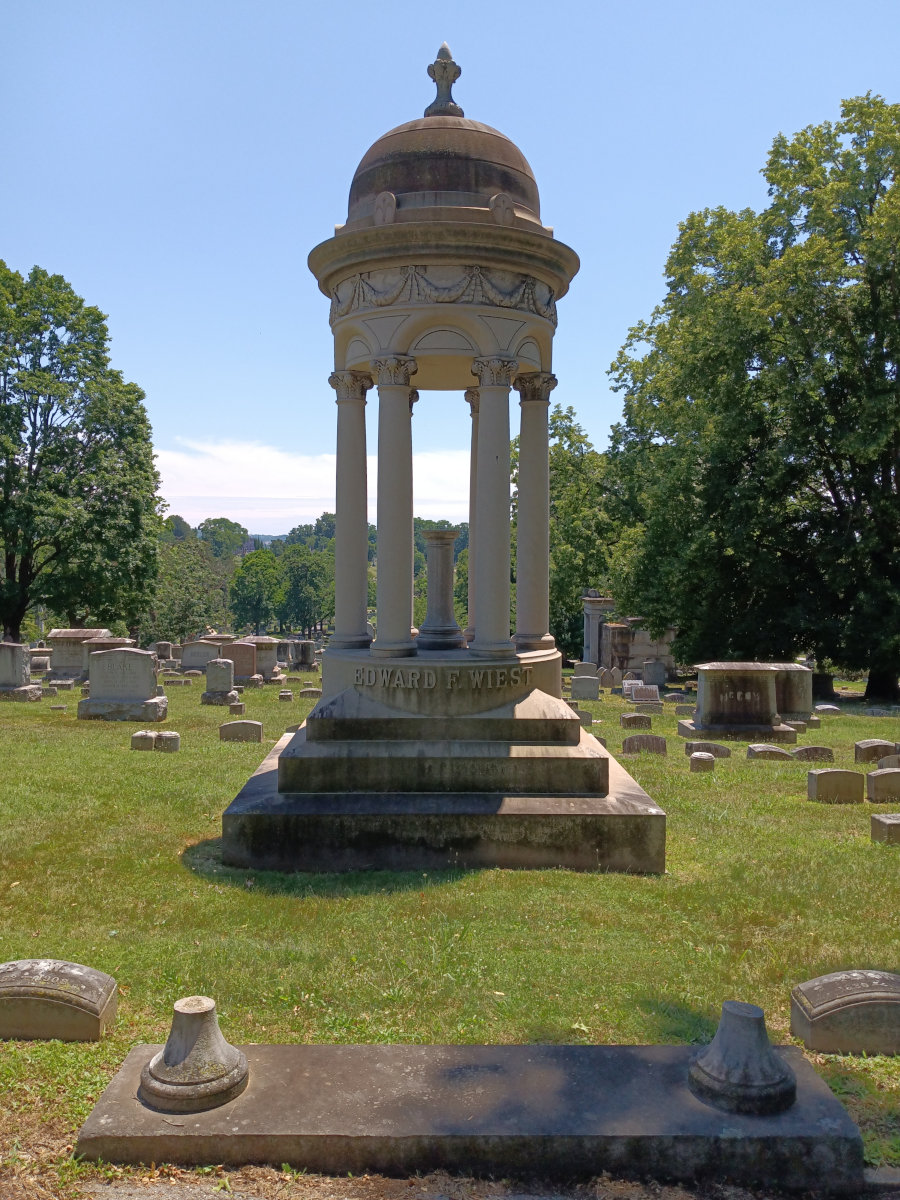
This was the grave of Edward Wiest. His family were merchants, and he owned a department store in the early 20th-century.
To give an idea of where I was, the Smith memorial is downhill of the tree at the right hand edge of the photograph. I was going away from where I had intended to go. 🙂
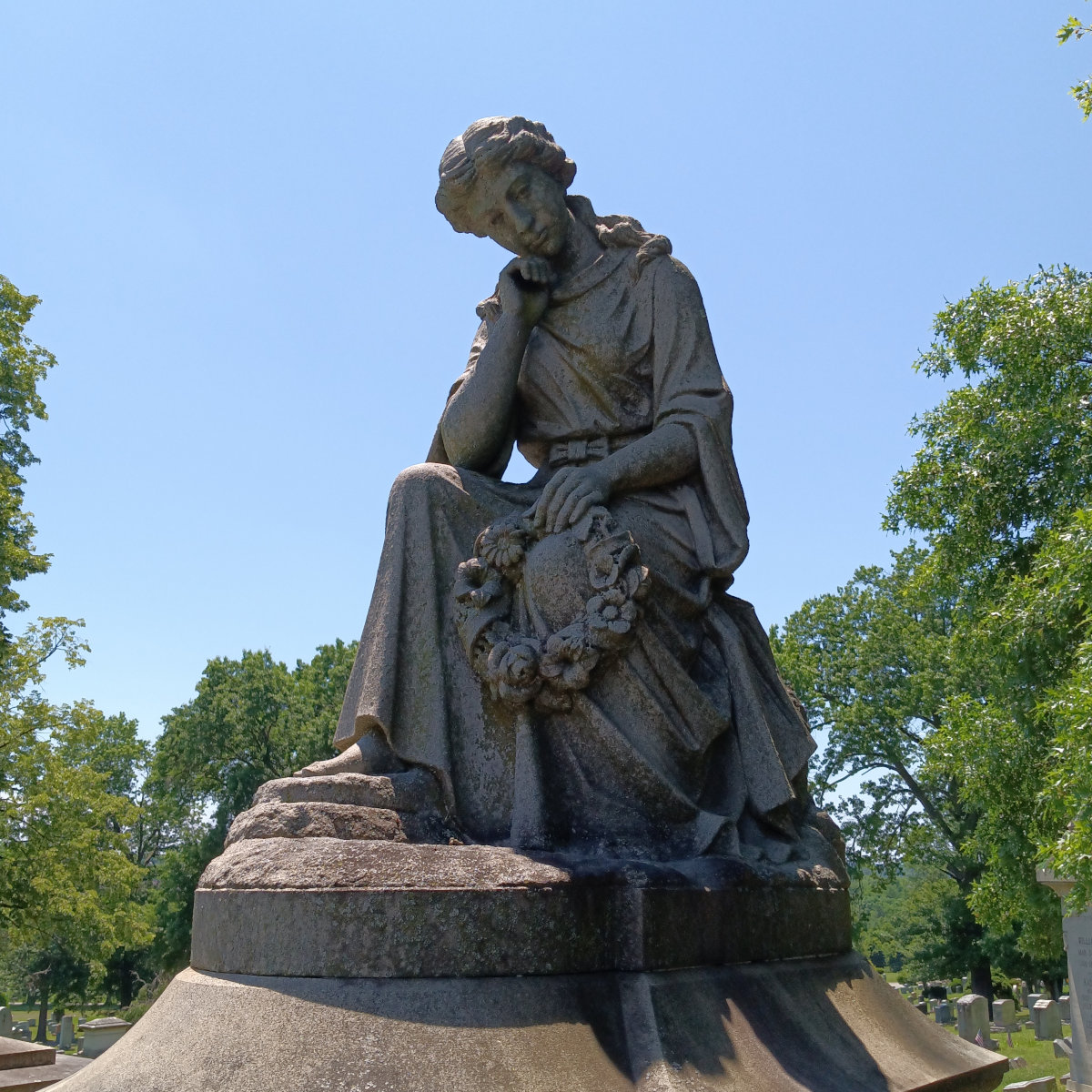
When visiting a cemetery, take time to admire the statues on the older graves. This statue was atop the grave of Erastus and Josephine McCleary. A century old at least, it has weathered the elements well. What is she thinking?
It was at about this point that I realized I was not going to reach the main entrance on George Street. It didn’t seem that hot, but I felt tired and dehydrated, not to mention my ankle was barking at me. (I stumbled slightly approaching the Smith monument. Nothing major, but it wasn’t happy with me.) Before I left, though, there was one final thing I took a look at.
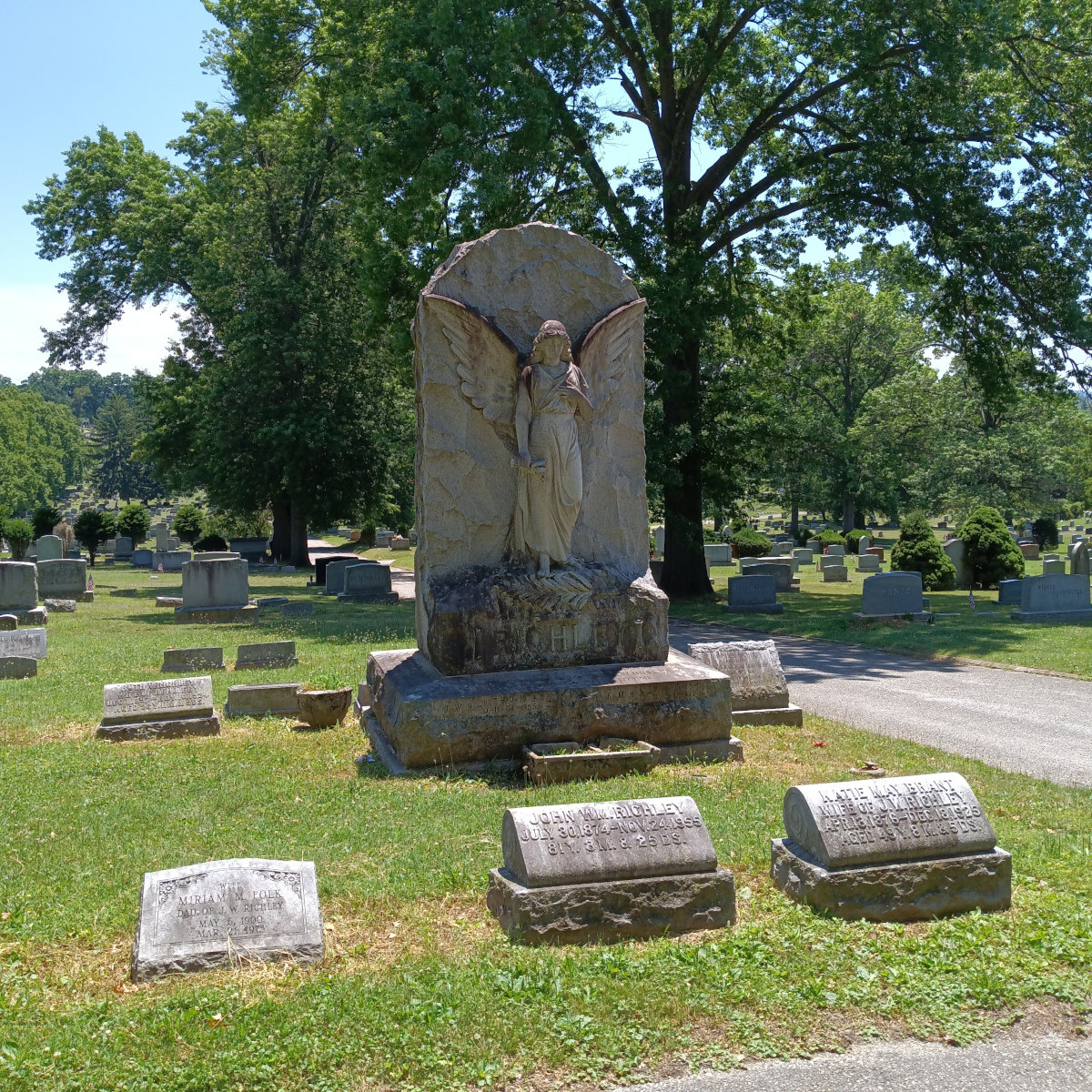
This is the grave of John and Katie Richley. There’s a memorial (Joh) near my great-grandparents in Baltimore that’s very similar — an angel, the backdrop, the name carved onto the backside (on the Joh, the front; on the Richley, the back) — that makes me wonder if it’s the same artist’s work, or at least the same studio’s work. They’re not the same — there are differences — but it’s the similarities I note.
It took about ten minutes to walk to the Beetle from here — I saw it from a distance, and then I lost it — and made my way home.
I felt like I’d covered a lot of ground. I knew there was a lot I hadn’t seen except from a distance. Then I looked again at the map this morning and I can see I barely scratched the surface. There’s much more to see.
When will I see it? Who can say. But I will go back someday.
For now, though, Lefty George, 20th-century baseball player, was remembered, and that’s enough.
